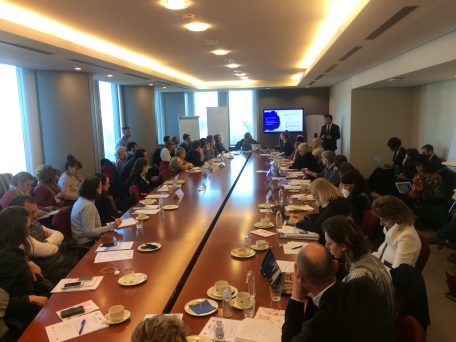The State of Artistic Freedom in Europe
“Artistic Freedom is a right in itself: the right to create”, these were the opening words of Juan Fernando López Aguilar, Chair of the LIBE Committee, introducing a debate on the State of Artistic Freedom in Europe. Organised by Freemuse in collaboration with Culture Action Europe the event was hosted by MEPs Domènec Ruiz Devesa and Julie Ward and featured the launch of Freemuse’s new report titled “Security, Creativity, Tolerance and their Co-existence: The New European Agenda on Freedom of Artistic Expression”. This was also an occasion to provide concrete policy recommendations to Members of European Parliament (MEPs) to address the worrisome state of artistic freedom in Europe.
According to the Freemuse report, the state of artistic freedom in Europe has deteriorated in recent years making the situation alarming. In 72% of the 380 cases recorded by Freemuse, government authorities were responsible for violations. Most frequently used legislation to silence artists was anti-terrorism law, insult to the state and its symbols, religious values ovverriding artistic freedom among others. According to Srirak Plipat, Executive Director of Freemuse, trends to censoring LGBTIQ artists and artworks also continues. “Security, Creativity, Tolerance and their Co-Existence” documents the most of the censorship in music (39%), visual art (22%), theatre (17%), film (13%), while literature (7%) and dance (2%) also remain under attack.
Elizbieta Podlesna, a polish psychotherapist and civil rights activist shared with participants her real life case of detainment in prison. Podlesna who distributed images of “Our Lady of Czestochowa” – the Virgin Mary with a rainbow halo was accused for hurting religious feelings. Under article 196 of the Polish criminal code she was arrested, her house was searched and her personal electronic items were captured.
Louise Haxthausen, Director of the UNESCO Liaison Office in Brussels addressed three topics in her intervention. She stressed that the restriction of artistic freedom is not only an impediment to the flourishing of culture but the first alarm sign of the bad health of our democracies. It is necessary to break the silence, she said to make sure Freedom of Artistic Expression is perceived as a human right. There has been a lot of work, effort and advocacy in media freedom, but we do not see the same results when it comes to artistic freedom. Louise welcomed the upcoming workshop on Artistic Freedom as promised in the 2019-20201 Council Work Plan for culture. She also called for accountability of parties who violate the 2005 convention and highlighted the importance of country reports and the monitoring.
The presentation of the report was introduced by Culture Action Europe’s Yamam Al Zubaidi who advocated for the need to produce a handbook on the available legal basis to protect artistic freedom. No legislation is missing on the matter, but is rather poorly used and known: There are a considerable number of different international and national legal frameworks – article 19 of the Universal Declaration of Human Rights, the international covenant on economic social and cultural rights of the UN and the 2005 UNESCO Convention, protecting artistic freedom.
Underlying the potential of Culture Action Europe and Freemuse’s collaboration, CAE Secretary General, Tere Badia, presented three jointly developed recommendations towards the EP, pertaining to the legal framework, the monitoring and the support to civil society organizations in facing the impediments to artistic freedom. Tere stressed that artistic freedom is a topic that goes beyond the cultural sector and affects gender policies, social cohesion and well being, participatory and inclusive governance, citizenship, values and democracy, all areas and topics already addressed in the EU priorities and in the Council Work Plan for Culture.
Artistic Freedom_CAE – Freemuse recommendations

